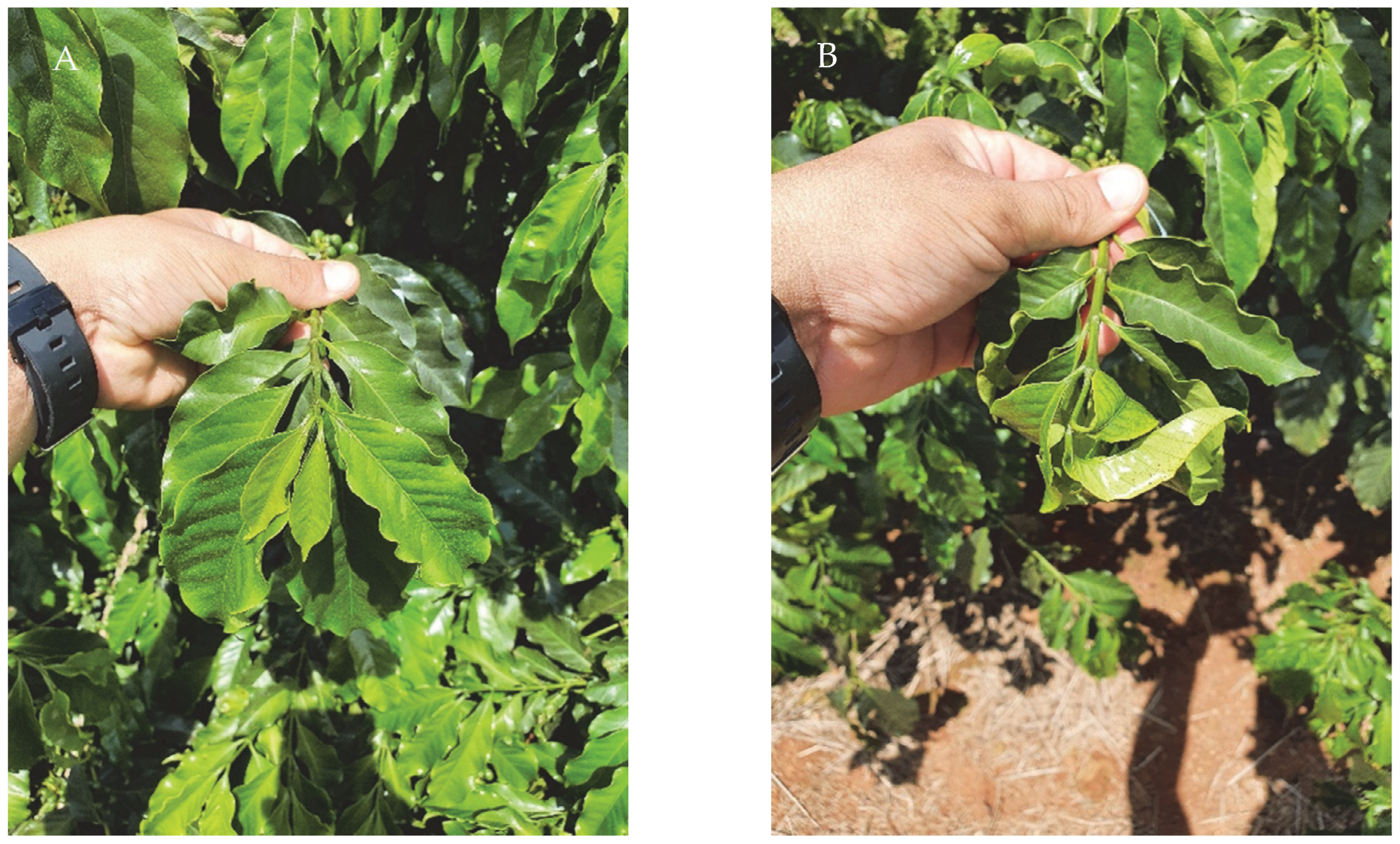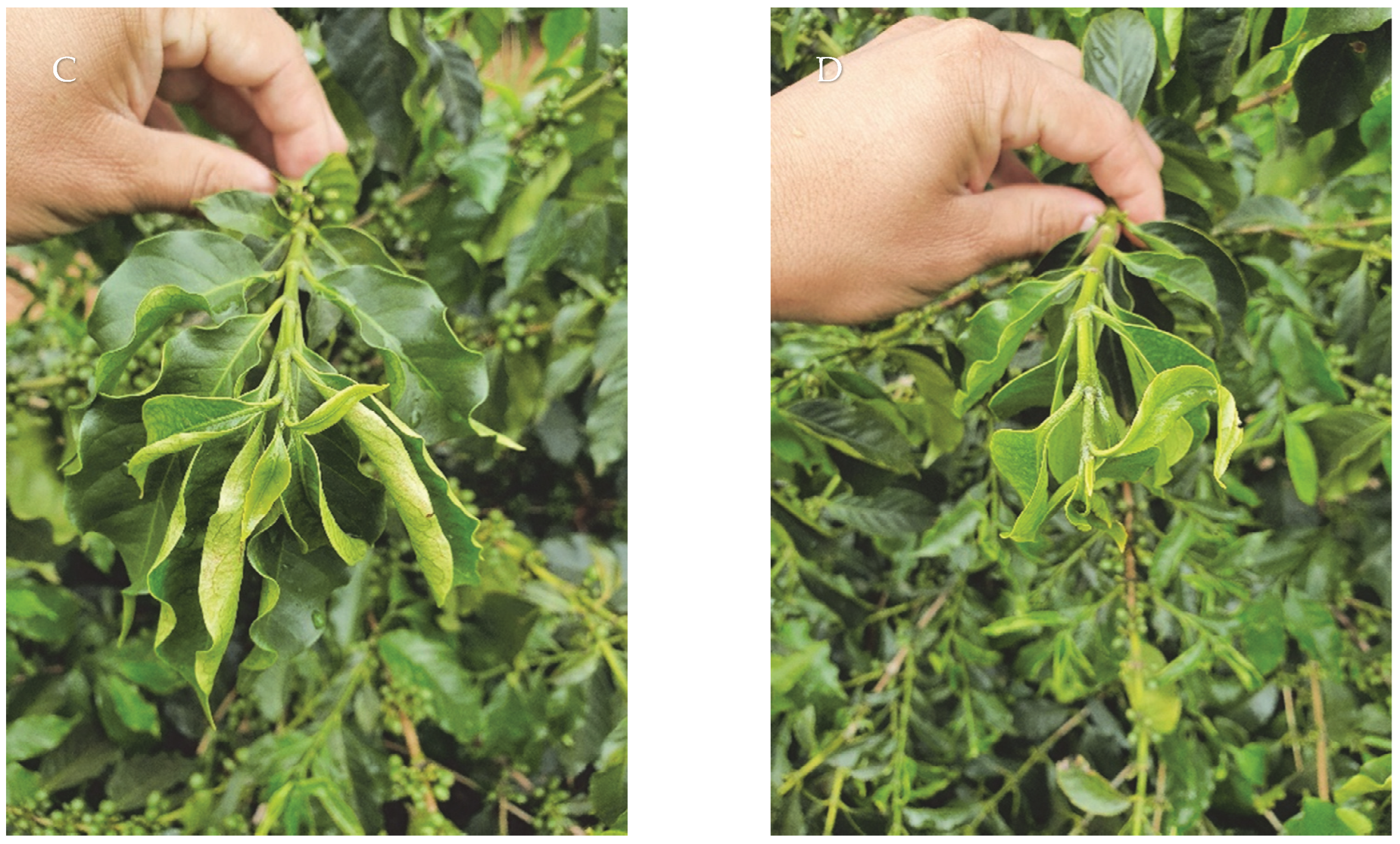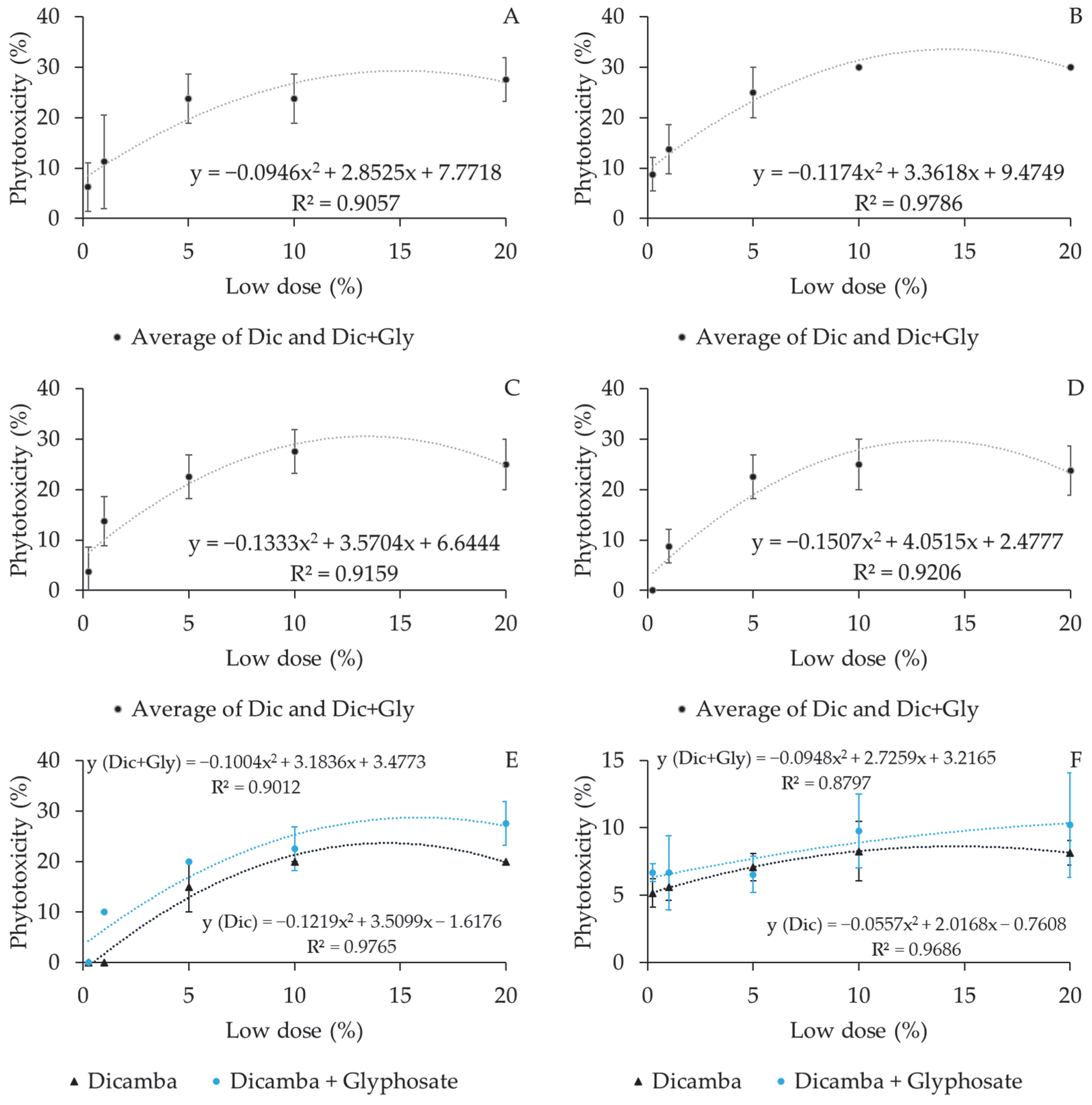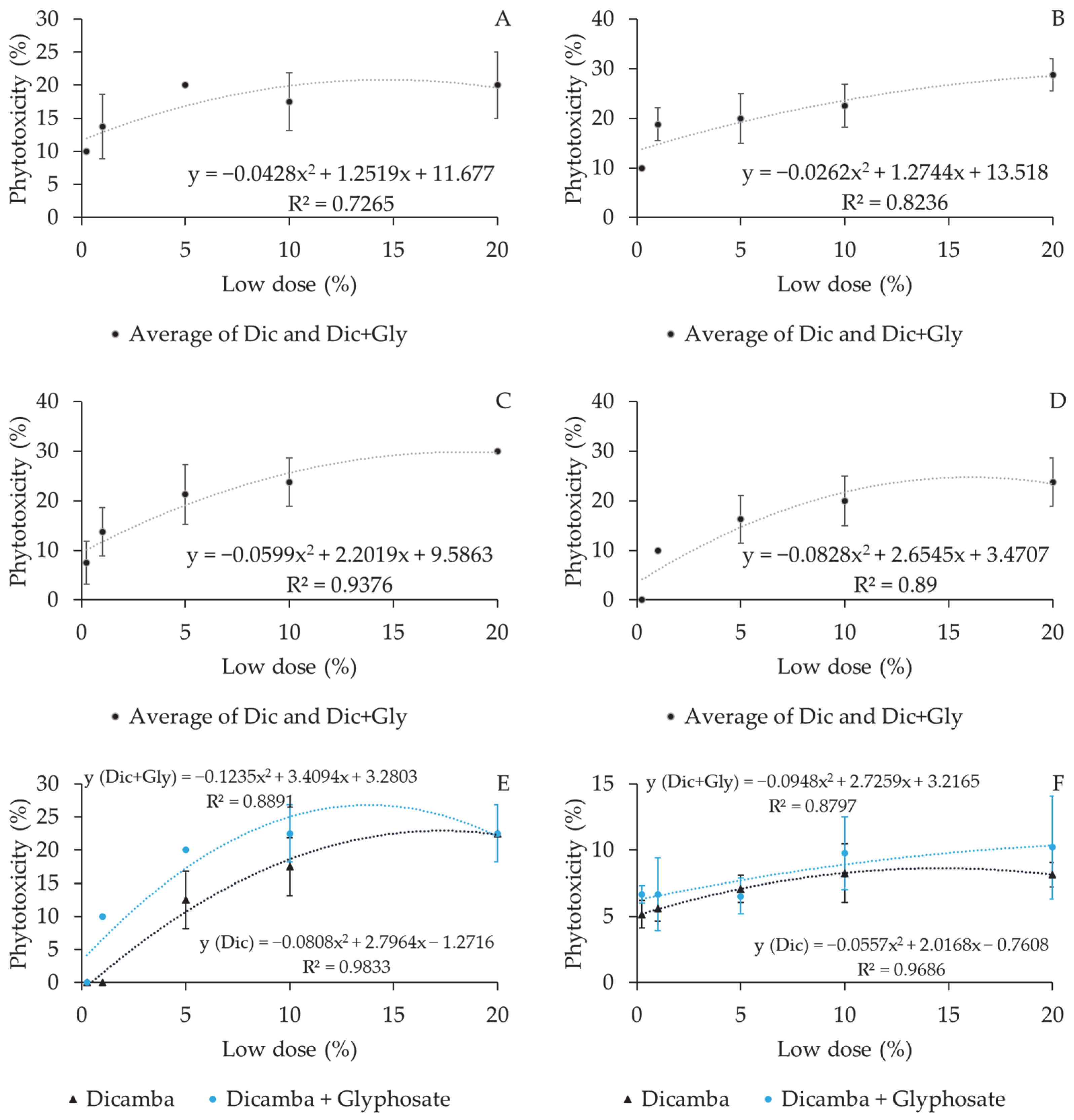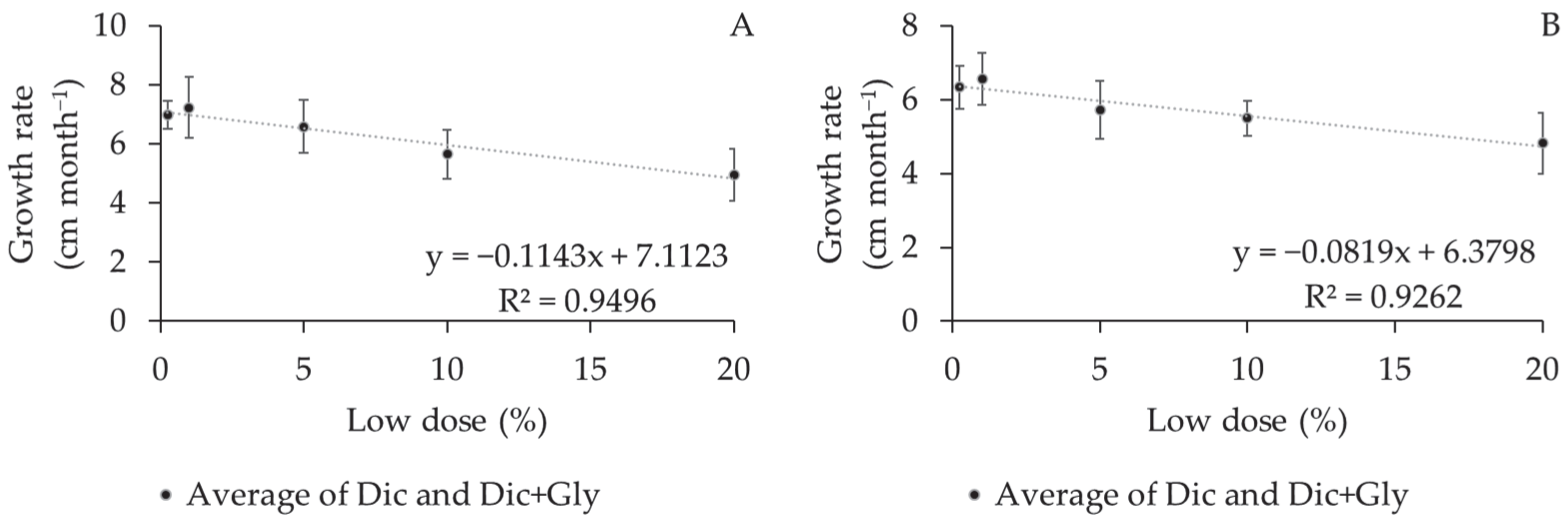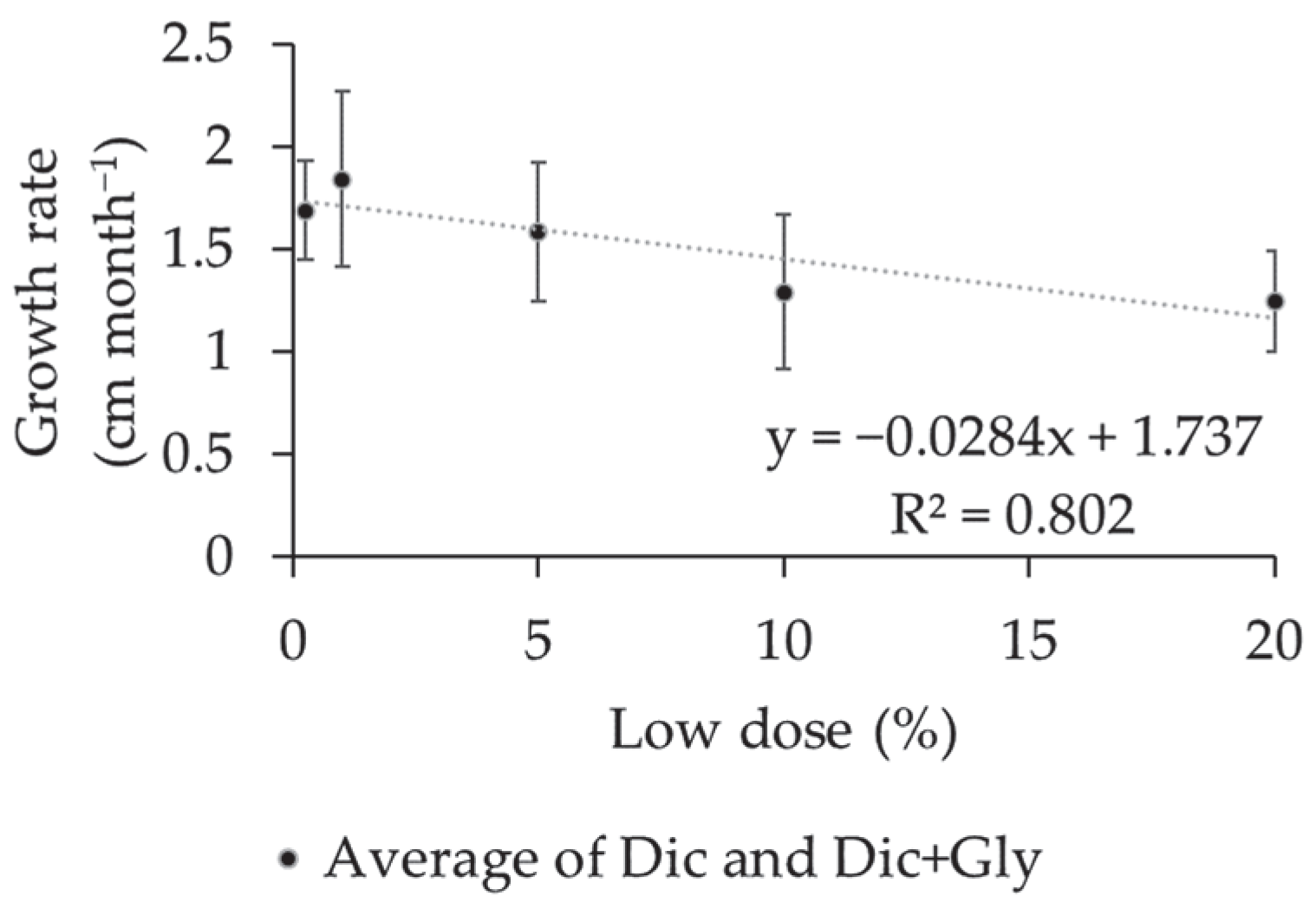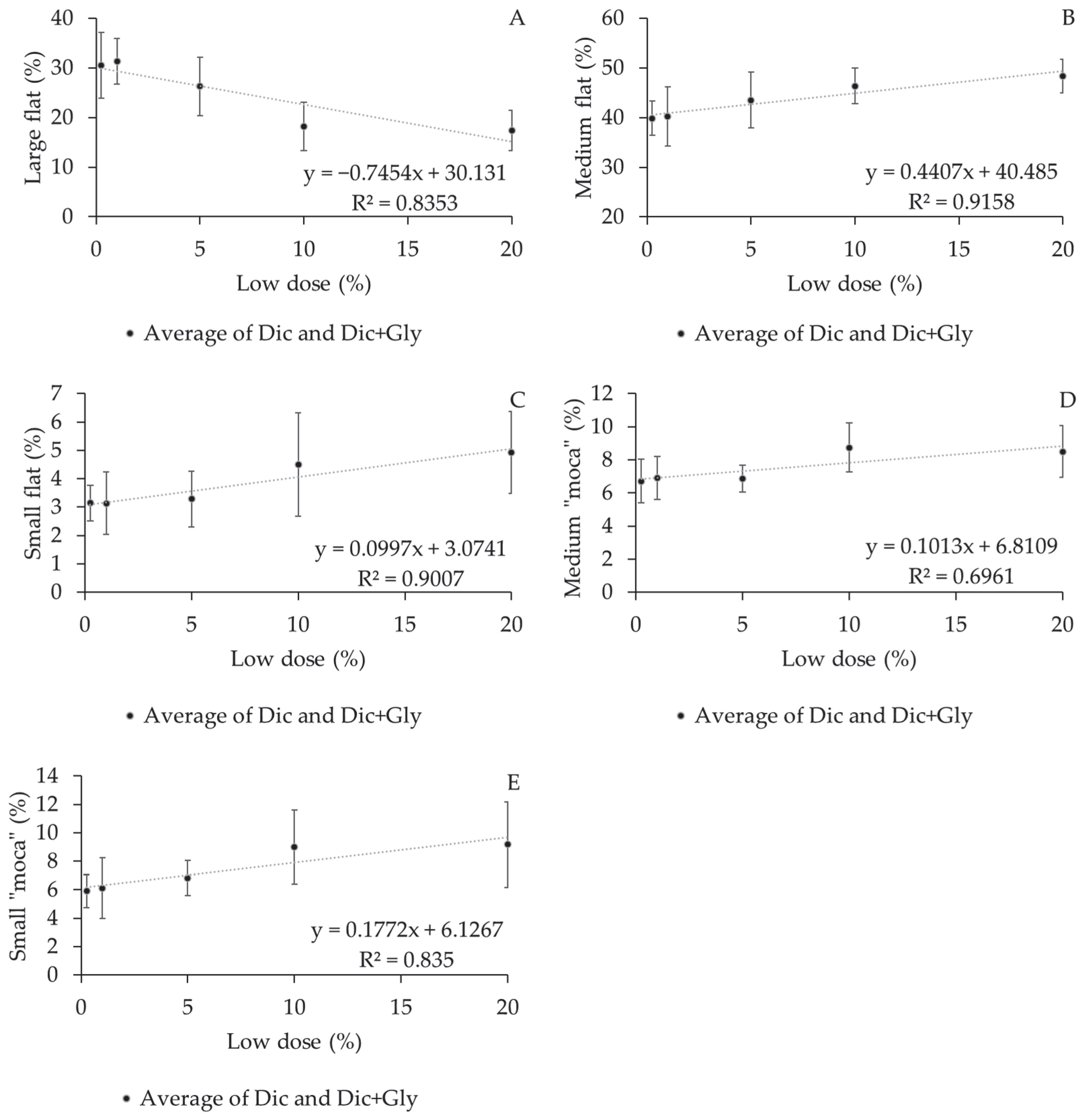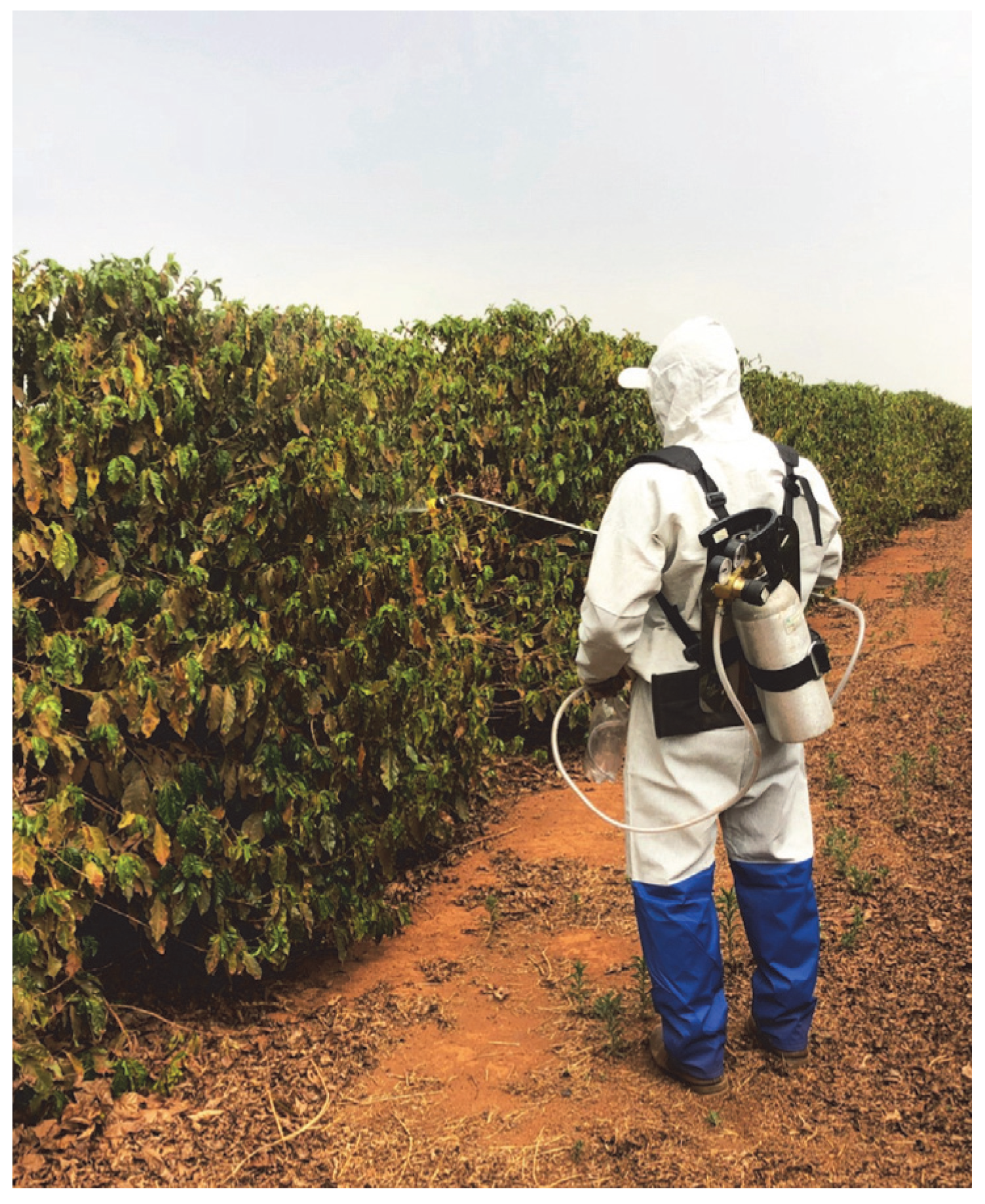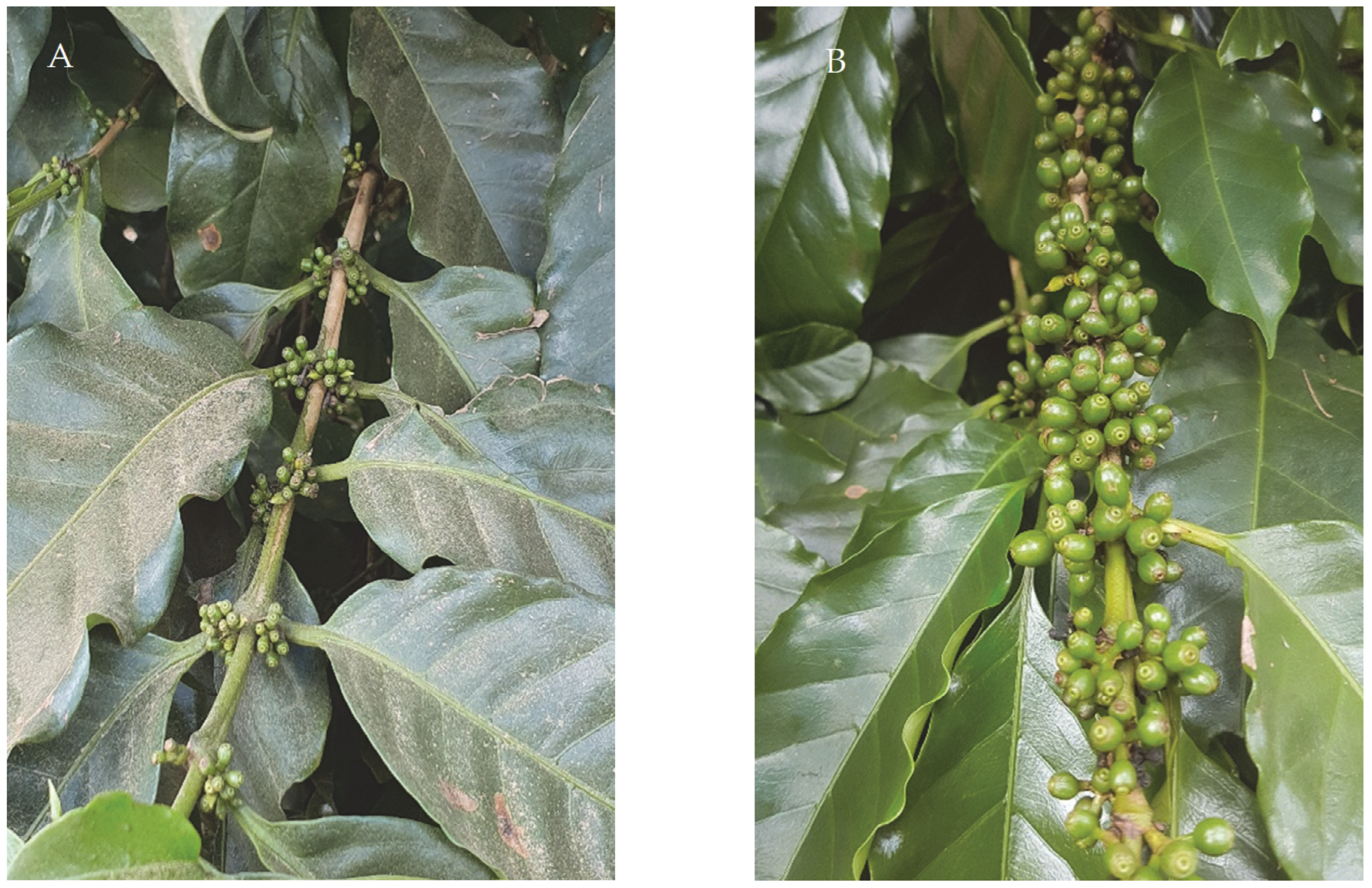4.1. Characterization of the Area
The tests were conducted in Monte Carmelo, MG, Brazil, in a commercial area located at −18,884471 and −47,351121, with an altitude of 956 m above sea level. The soil was characterized as a dystrophic red oxisol [
29]. According to the Köppen classification, the climate in the region is type AW—tropical hot humid, with a cold (15–16 °C) and dry winter. According to the Brazilian Institute of Meteorology, the annual precipitation and temperature averages are 1400 mm and 23 °C, respectively [
30].
Drift simulation was conducted in adult, four-year-old, productive Mundo Novo coffee plants in a drip-irrigated area. The location had a population density of 3508 specimens ha−1, with a spacing of 3.8 m between rows and 0.75 m between individual plants, and a mean crown height and diameter of 1.69 and 1.47 m, respectively.
4.2. Experimental Unit and Equipment
The experiment was conducted twice (Experiment I and Experiment II), in a randomized block design, in a 2 × 5 + 1 factorial scheme, with 4 replications, considering two compositions of herbicide mixture (dicamba and dicamba + glyphosate) and five low doses (0.25; 1; 5; 10; and 20% of the recommended dose) of the respective actives and a control without application. The plots consisted of five plants, spaced by 20 plants in a row (15 m) and 7.6 m between blocks, the three central plants considered useful and the two extremities considered borders.
The sprays were prepared with a dose of 560 g acid-equivalent (a.e.) ha
−1 of dicamba (3,6-dichloro-o-anisic acid) (Atectra
®, BASF SA, Santo Antônio de Posse, SP, Brazil) and 1000 g a.e. ha
−1 of glyphosate (potassium salt of N-(phosphonomethyl) glycine) (Zapp QI620, Syngenta SA, São Paulo, SP, Brazil) (
Table 8).
The application procedure was carried out following the methodology adapted from [
22]. A total of 2 L volume of the sprays was prepared, which was necessary to fill the polyethylene terephthalate bottles used as reservoirs of the CO
2 pressurized backpack sprayer (Herbicat, São Paulo, SP, Brazil). The application bar was fitted with a nozzle featuring a GRD 12002 fan-type tip (Hypro Pentair, MN, USA). This nozzle had a jet opening angle of 120° and was operated at a designated flow rate of 0.757 L min
−1 under a pressure of 280 kPa. This configuration was chosen to generate fine to very fine droplets, as specified by the manufacturer.
The tip was maintained at a distance of 0.5 m away from the coffee crown during application to cover the entire leaf area with an up and down movement on both sides of the plants. The working condition was maintained for an application rate of 150 L ha
−1, with approximately 42.75 mL plant
−1 (application rate divided by number of plants per ha) (
Figure 7).
The meteorological conditions were monitored in real time during both experiments using a thermo-hygro-anemometer (LM-800, Instrutherm, São Paulo, SP, Brazil) (
Table 9).
The sprays were applied in November (Experiment I) and December (Experiment II) 2020, corresponding to two stages of coffee fruit development, namely, the formation stage, when the cherries show no visible growth, and the expansion stage, when the cherries enlarge with a characteristic size and shape [
31] (
Figure 8).
4.3. Evaluated Parameters
Phytotoxicity was assessed after application using a grade scale adapted from [
20], with scores from 0% to 100%. Here, the scores of “0”, “10–30%”, “40–60%”, “70–100%”, and “100%” corresponded to no changes, alterations in the visual shape of the leaf blade, damage involving tissue necrosis, apical bud death and extensive branch necrosis, and complete plant mortality, respectively. The plants were evaluated at 7, 15, 30, 60, 90, and 120 DAT.
In addition to the phytotoxicity analysis, the growth rate in terms of biometric variables was determined based on plant height, canopy diameter, branch length, and the number of internodes over a four-month evaluation period. The following parameters were assessed at the initiation and conclusion of the experiment and were calculated as the difference in growth over the designated time period. Here, the growth rate was computed using the following equation:
Plant height was measured utilizing a rigid measuring tape, capturing the height of the three central plants within the plot from the ground level to the apical bud. The crown diameter was determined as the mean diameter of the canopy, which was measured between the ends of plagiotropic branches in the middle third of the plant. The length of the branch was measured using a flexible measuring tape in the middle third of the three central plants on both sides of the plant from the point of insertion in the orthotropic branch to the point of growth of the branch. The number of internodes was directly counted in the same branches where branch length was determined. At the end of the experiment, productive parameters (physical classification of coffee beans, productivity (bag ha
−1), and performance (L kg
−1)) were evaluated following the methodology adapted from [
32,
33]. For better control, the plots were harvested manually when the percentage of green cherries was lower than 20%, following the methodology adapted from [
34]. After harvesting the total volume produced in each plot, a 6 L sample was separated for post-harvest analyses.
The 6 L sample was placed in polyethylene net bags and dried on a suspended terrace until the atmosphere showed 12% humidity, which was measured using a moisture meter (G800, Gehaka, São Paulo, SP, Brazil). Then, the dry coffee mass was determined using a semi-analytical scale (BL3200H, Shimadzu, Barueri, SP, Brazil), and the volume of the sample was measured with a 1000 mL graduated cylinder. Subsequently, the samples were processed using a processor (DRC-1, Carmomaq, Espírito Santo do Pinhal, SP, Brazil), and mass and volume were determined again. The moisture of the samples was then determined to correct the masses.
Based on the ratio of the volume of the sample (6 L) and the mass of the processed sample, the production per plot was determined and extrapolated to determine productivity in bags of 60 kg ha−1. Performance parameters (liters kg−1) were also evaluated as follows: (a) field coffee: volume of ripe coffee harvested to produce 1 kg of processed coffee, and (b) dry coffee: volume of dry coffee used to produce 1 kg of processed coffee.
The physical classification of the size and shape of the beans was performed following the methodology described in the Brazilian Legislation [
35] using a sample of 100 g of processed coffee and a set of circular (18, 17, 16, 15, 14, and 13/64ths of an inch) and oblong sieves (13, 12, 11, 10, 9, and 8/64ths of an inch). Circular sieves retained flat beans, and oblong sieves separated the “moca” beans. Hence, the separation was performed, and the following categories were evaluated: (a) Large flat—sieves 18 and 17; (b) Medium flat—sieves 16 and 15; (c) Small flat—sieves 14 and smaller; (d) Large “moca”—sieves 13, 12, and 11; (e) Medium “moca”—sieves 10; and (f) Small “moca”: sieve 9 and smaller.
